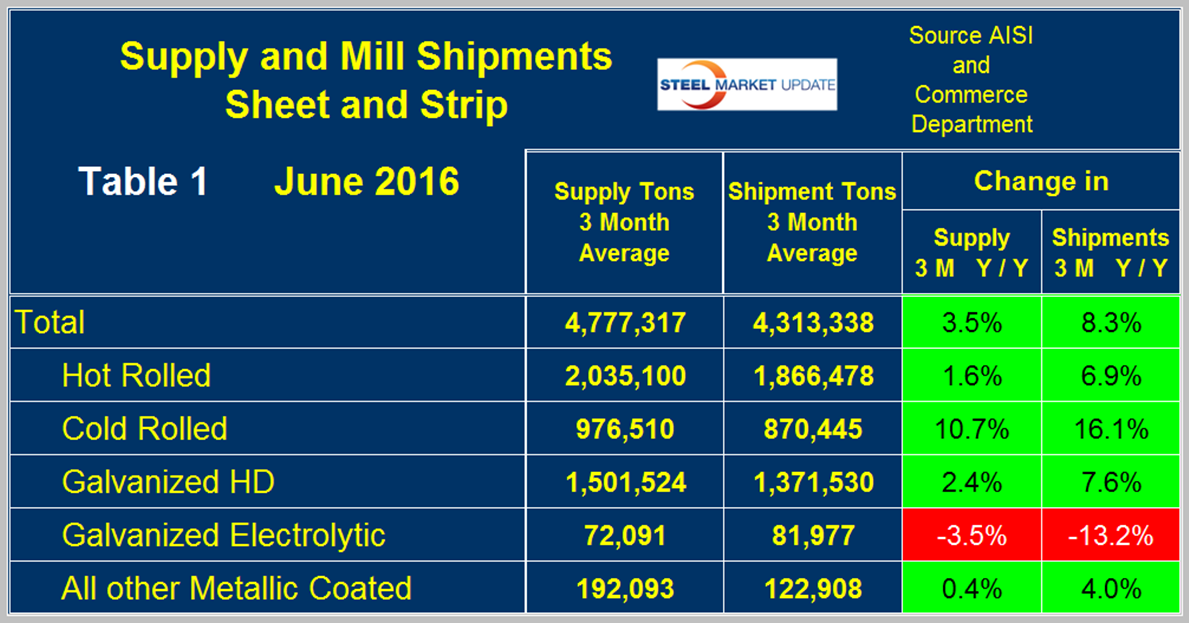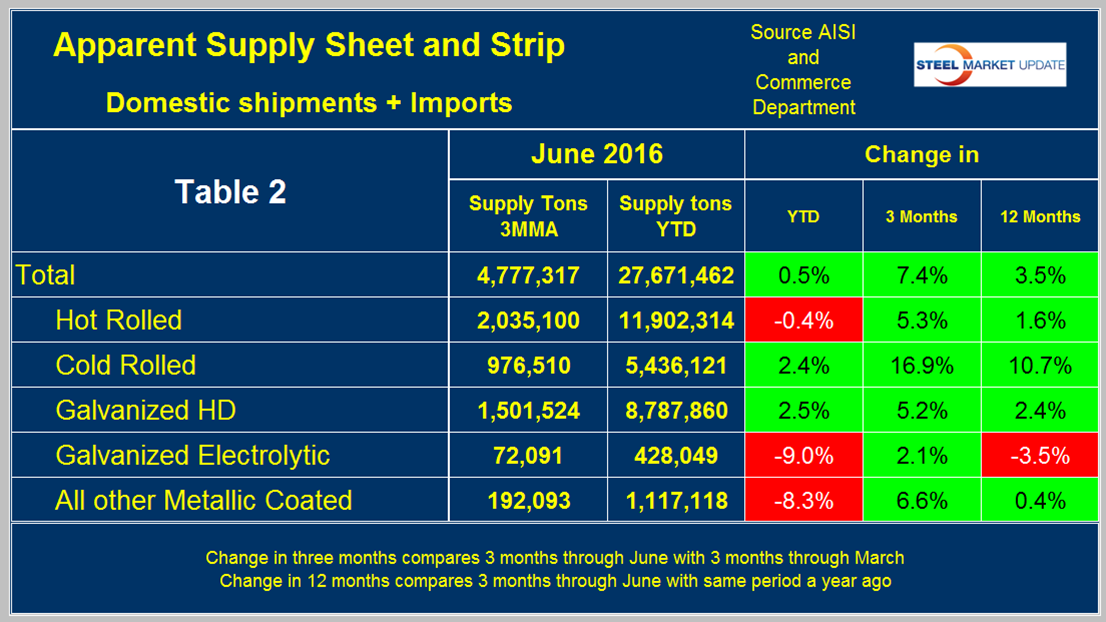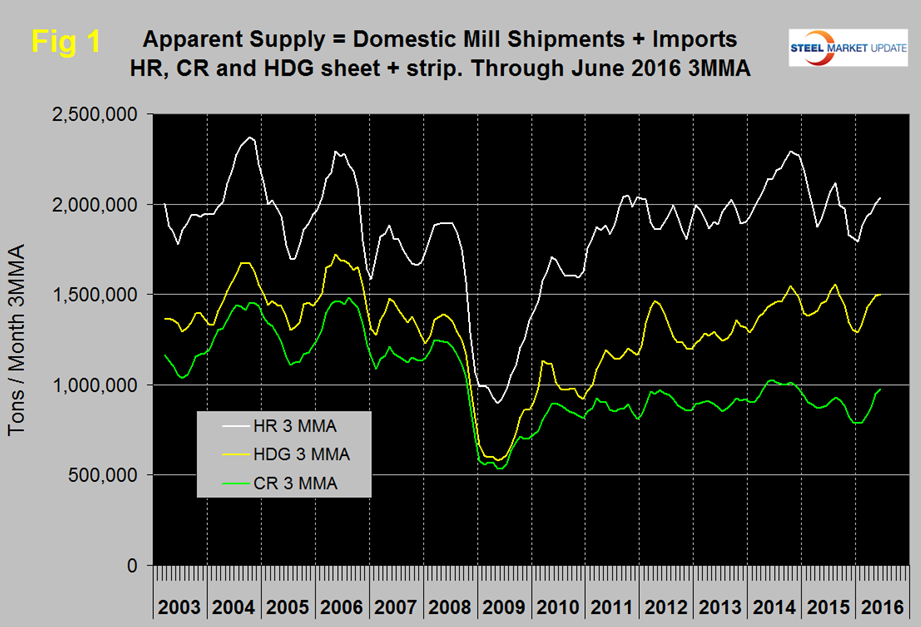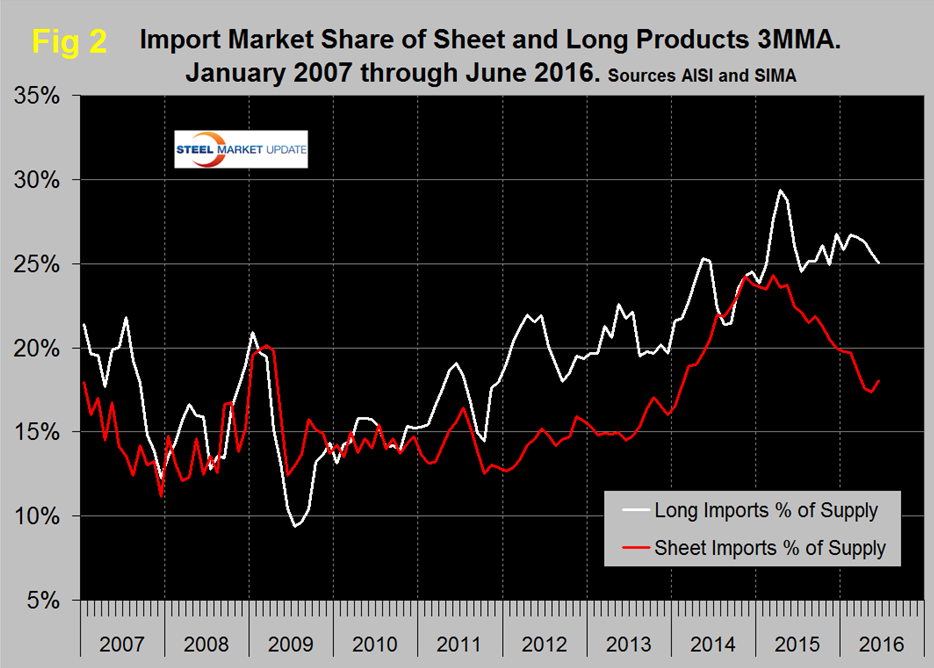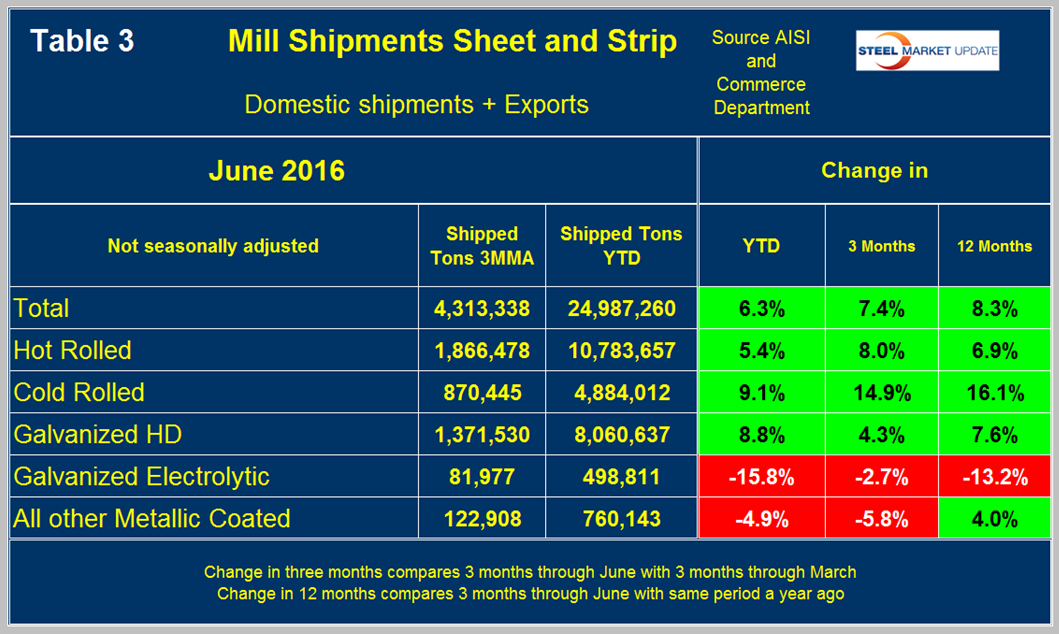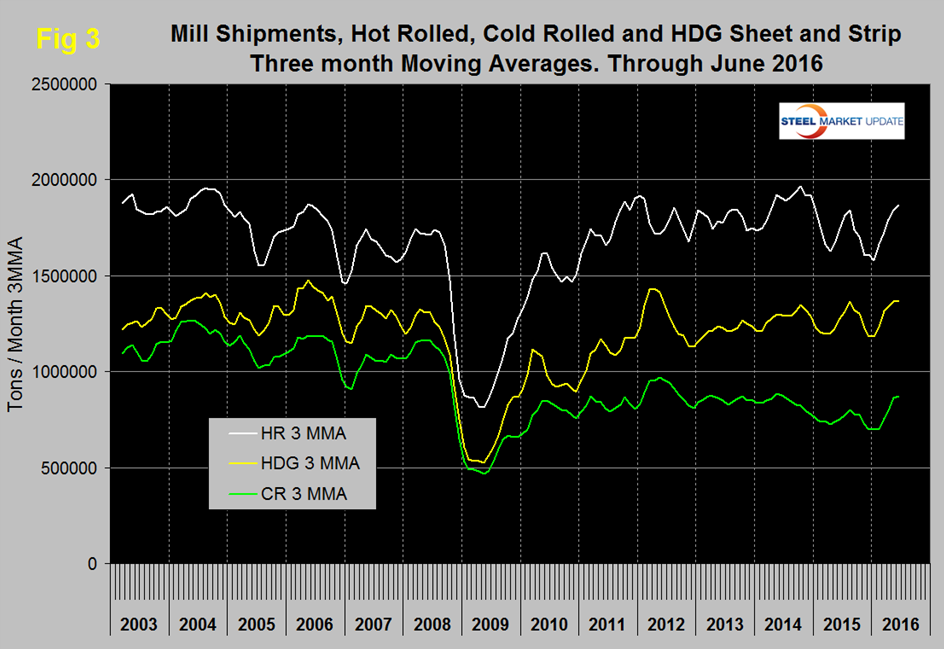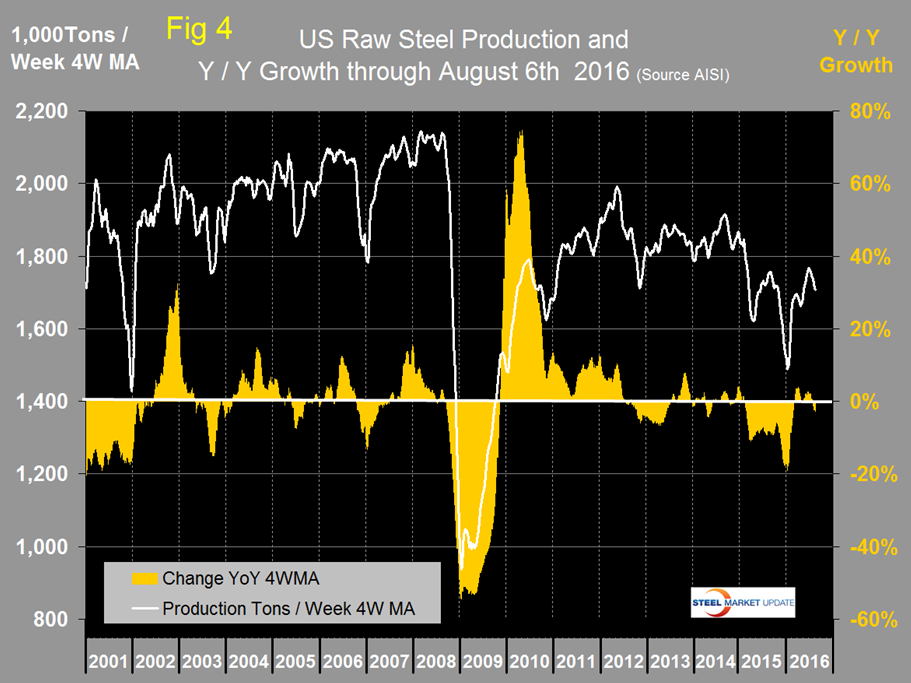Economy

Shipments and Supply of Sheet Products through June 2016
Written by Peter Wright
August 12, 2016
This report summarizes total steel supply from 2003 through June 2016 and year on year changes. It then compares domestic mill shipments and total supply to the market. It quantifies market direction by product and enables a side by side comparison of the degree to which imports have absorbed demand. Sources are the American Iron and Steel Institute and the Department of Commerce with analysis by SMU.
Table 1 shows both apparent supply and mill shipments of sheet products (shipments includes exports) side by side as a three month average through June, for both 2015 and 2016.
Apparent supply is a proxy for market demand. Comparing these two time periods total supply to the market was up by 3.5 percent and shipments were up by 8.3 percent. The fact that shipments were up by more than supply means that imports are putting less pressure on the market. Table 1 breaks down the total into product detail and it can be seen that this was true for all products except electro-galvanized which is a special case because EG has a trade surplus. The other sheet products all have a net trade deficit.
A review of supply and shipments separately for individual sheet products is given below.
Apparent Supply is defined as domestic mill shipments to domestic locations plus imports. In three months through June 2016 the average monthly supply of sheet and strip was 4.777 million tons, up by 3.5 percent year over year as mentioned above but up by 7.4 percent comparing April through June with the previous three months. The short term improvement (3 months) compared to the long term improvement (12 months) means that momentum continues to be positive. Table 2 shows the change in supply by product on this basis through June. Momentum was positive for all products including electro-galvanized.
Figure 1 shows the long term supply picture for the three major sheet and strip products, HR, CR and HDG since January 2003 as three month moving averages and the improvement that has occurred this year.
Figure 2 shows import market share of sheet products and includes long products for comparison.
Based on a 3MMA the import market share of sheet products has increased in June but in the bigger picture has declined more or less continuously since February 2015 when it was 24.3 percent to 18.4 percent in June 2016. Long product import market share peaked at 29.4 in June last year, declined abruptly to 24.5 percent in July 2015 and now stands at 25.0 percent in this latest data.
Mill Shipments
Table 3 shows that total shipments of sheet and strip products including hot rolled, cold rolled and all coated products were up by 8.3 percent in 3 months through June year over year and up by 7.4 percent comparing three months through June with three months through March.
Momentum for the total shipments of sheet and strip products was negative because the 3 month growth (7.4 percent) was less than the 12 month result (8.3 percent). This was not true of all the individual products. Hot rolled had a small positive momentum but cold rolled and HDG had small negative momentum. Electro-galvanized had very positive momentum as its rate of decline in shipments shrank. Other metallic coated (mainly Galvalume) had a very negative momentum as its shipment growth in 12 months of 4.0 percent collapsed to a contraction of 5.8 percent in 3 months. Figure 3 puts the shipment results for the three main products into the long term context since January 2003. All three have had positive growth this year.
SMU Comment: The numbers in this report illustrate why it’s necessary to look at different time periods to try to understand the whole picture. We could draw different conclusions based on which time period we chose to describe. Shipments and supply are both still experiencing positive Y/Y growth but the growth of shipments is slowing as supply growth is accelerating. A problem with this data is that it’s now mid-August and the latest data we have for shipments and supply is for June. The AISI puts out weekly data for crude steel production the latest for which was w/e August 6th. This provides the most current data for steel mill activity. Figure 4 shows the Y/Y change in weekly crude output on a four week moving average basis.
Growth became positive in w/e March 5th and in the next 19 weeks there was only one week with negative Y/Y growth. Growth became negative again in w/e July 23rd and continued to deteriorate in the last two weeks of data. Note, this is not a summer slowdown as we are considering Y/Y data. This deterioration in weekly shipments does not jive with our key market indicators data which are mostly still trending positive or with our SMU buyer’s sentiment index or with our service center surplus/deficit data.

Peter Wright
Read more from Peter WrightLatest in Economy

ISM September survey captures deepening manufacturing gloom
The Institute for Supply Management’s (ISM) latest monthly report on manufacturing reflects a bleak view of American industry in September.

Key industries concerned over government shutdown’s impact on steel, manufacturing
Trade groups cautioned that a prolonged shutdown could strain US industry.

Chicago Business Barometer catches cold winds of contraction in September
The Chicago Business Barometer's September reading indicates a softening in overall business activity in the Midwest for the third consecutive month, with new orders and backlogs retreating further.

Metalforming market sentiment takes a dive in September: PMA
Metalforming manufacturers anticipate a decrease in near-term conditions, according to the Precision Metalforming Association's (PMA) Business Conditions Report for September.

AIA: Architecture firms still under pressure
Architecture firms reported a modest improvement in billings through August, yet business conditions remained soft, according to the latest Architecture Billings Index (ABI) release from the American Institute of Architects (AIA) and Deltek.

